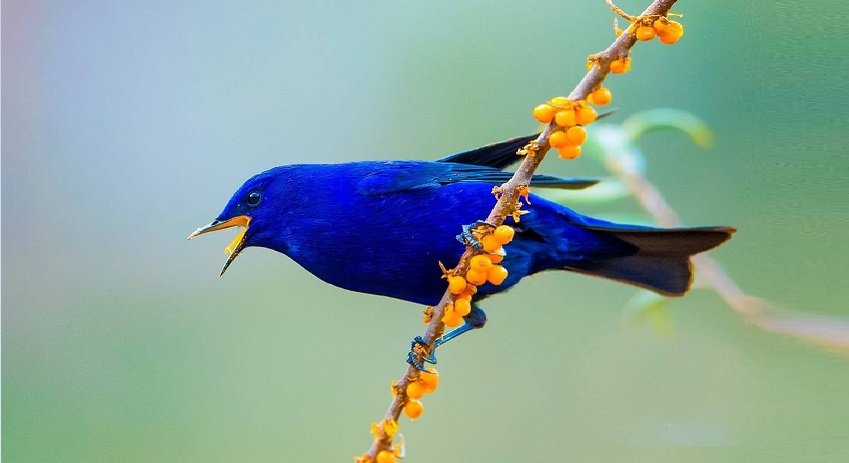Grandala Birds Through Himachal Sainj Valley Paint the Sky with Their Wings
Grandala birds through Himachal Sainj Valley have recently become the center of attention for nature lovers, birdwatchers, and social media alike. A recent video showing these breathtaking birds swirling over treetops has gone viral, capturing the vivid elegance of one of the most mesmerizing avian spectacles in the Himalayas. With their electric-blue feathers shimmering in the cool mountain air, these rare birds seem like they’ve been carved straight out of the sky.
The Grandala, or Grandala coelicolor, is a high-altitude bird species from the thrush family, found mainly in the Himalayas stretching across North India, Nepal, Bhutan, and China. Spotted recently in Sainj Valley in Himachal Pradesh, these birds have amazed both casual observers and expert ornithologists alike. When a flock of these vibrant creatures takes flight, the scene is almost surreal as if the sky itself has come alive in motion.
Grandala Birds Through Himachal Sainj Valley: A Living Sky Over the Hills
The Grandala’s vibrant plumage isn’t a result of blue pigment. In fact, blue is among the rarest natural colours in the animal kingdom. The birds achieve their dazzling blue shade through structural coloration a fascinating trick of physics where the microscopic structure of their feathers reflects and scatters light in such a way that only blue reaches our eyes. This makes their colour appear unusually vivid and pure much like the deep hue of the sky on a clear day.

In the wild, the Grandala male boasts bright purplish-blue feathers that catch light dramatically, while the female is duller in comparison, often cloaked in grey-brown tones. It’s the males that usually catch the eye during group sightings, as they perch across trees and rocks in flocks that sometimes number in the hundreds or even thousands.
One such recent sighting in Sainj Valley captured this exact phenomenon trees, roadsides, and cable lines all dotted with these radiant blue birds. Locals and tourists alike were stunned, describing the moment as something out of a dream. The birds, often silent when perched, break into soft chirping as they shift and swirl mid-air in coordinated flight patterns, offering an unforgettable natural performance.
Grandala Birds Through Himachal Sainj Valley: An Enchanting Encounter at 3,000 Metres
At elevations of 3,000 metres and above, sightings of the Grandala become more likely. These birds generally stay close to the snowline, and their presence is often limited to remote, less-disturbed areas. In the recent video circulating on social media, viewers can see how the Grandalas blanket the misty Sainj Valley a quiet pocket of Himachal Pradesh known for its untouched natural beauty and proximity to the Great Himalayan National Park.
View this post on Instagram
Birdwatchers describe seeing the birds behave in spontaneous bursts of movement. Perched quietly for minutes, they suddenly take to the sky in a coordinated flight, forming a wave-like mass that moves with elegance and rhythm. And just as suddenly, they settle again on treetops and rocks, blending the motion of the sky with the stillness of the mountains. Also Read: 10 Shocking Truths Behind Japanese Culture That No One Talks About
The Grandala’s feeding habits also play a role in their movements. They flock together to feed on berries, insects, and small invertebrates. In Sainj Valley, the availability of natural forest food and a lack of human interference make it a preferred seasonal destination for these birds. With the current viral footage bringing more eyes to the region, there’s rising hope for eco-tourism to grow responsibly without disturbing the local ecosystem.
Conclusion:
The sight of Grandala birds through Himachal Sainj Valley is not just a treat for the eyes it’s a rare and moving experience that blends colour, nature, and tranquility. As these shimmering birds take flight above the snow-dusted treetops, they offer a brief, magical glimpse into the wonders that still thrive quietly in the higher reaches of the Himalayas.

